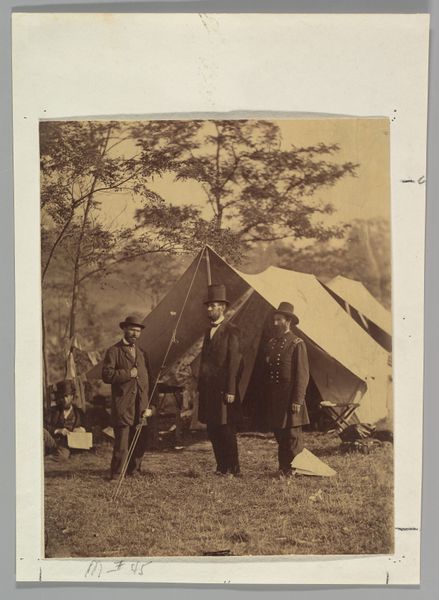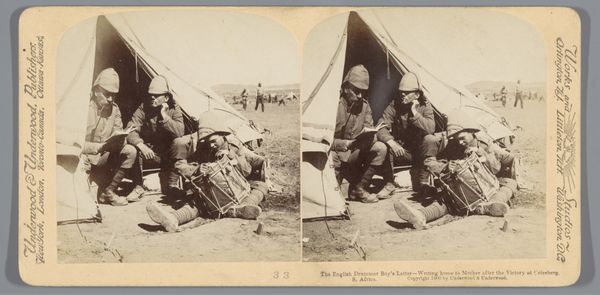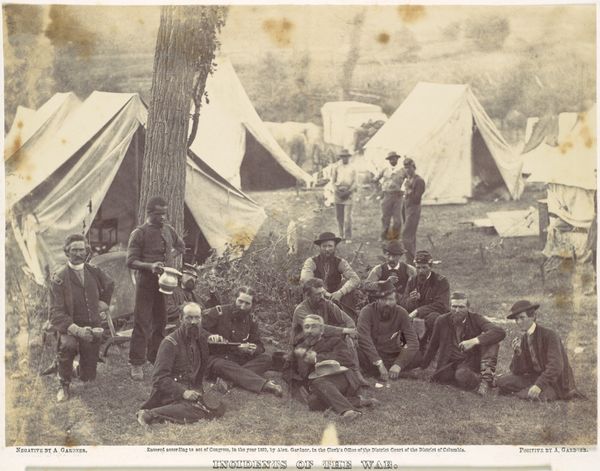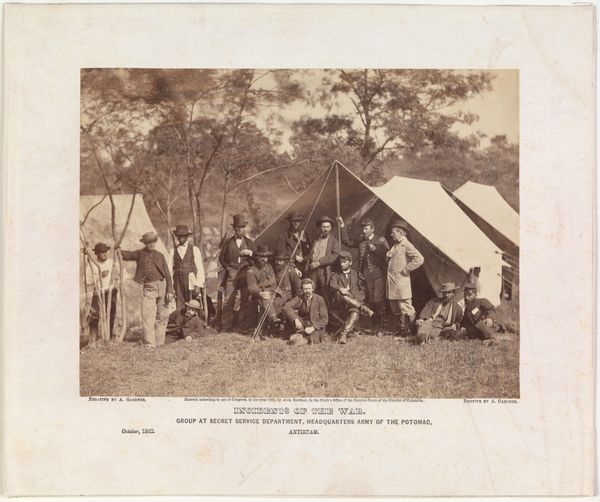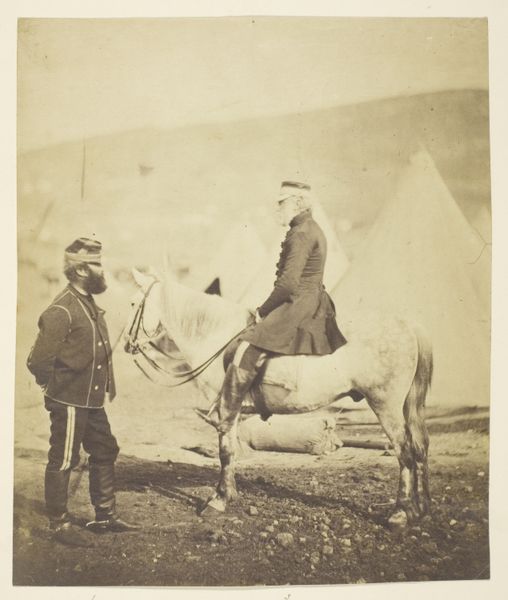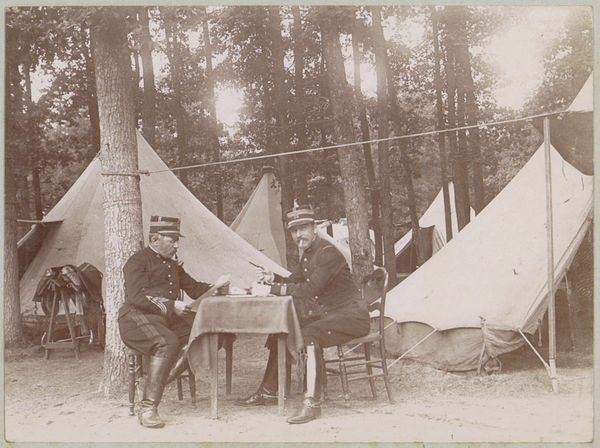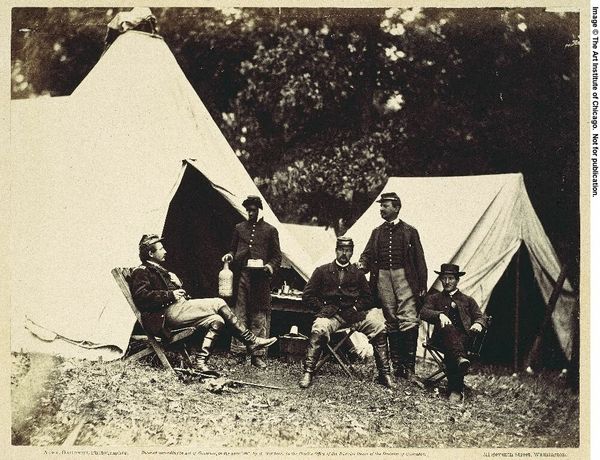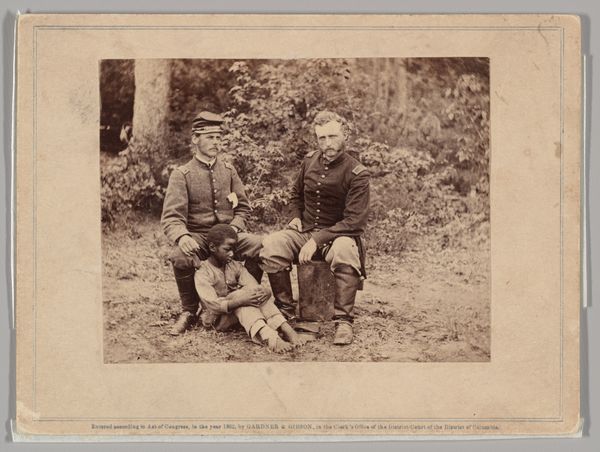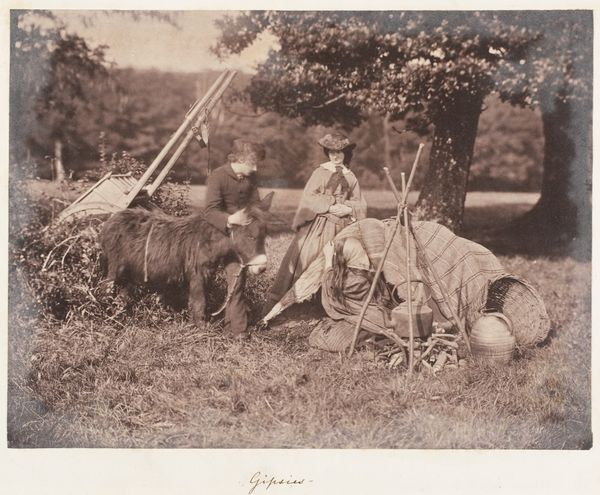![[President Abraham Lincoln, Major General John A. McClernand (right), and E. J. Allen (Allan Pinkerton, left), Chief of the Secret Service of the United States, at Secret Service Department, Headquarters Army of the Potomac, near Antietam, Maryland] by Alexander Gardner](/_next/image?url=https%3A%2F%2Fd2w8kbdekdi1gv.cloudfront.net%2FeyJidWNrZXQiOiAiYXJ0ZXJhLWltYWdlcy1idWNrZXQiLCAia2V5IjogImFydHdvcmtzL2EwMzE4OGE0LTNmY2EtNDhlZC05YzdkLTBjYzY4NGQ2MjI3OC9hMDMxODhhNC0zZmNhLTQ4ZWQtOWM3ZC0wY2M2ODRkNjIyNzhfZnVsbC5qcGciLCAiZWRpdHMiOiB7InJlc2l6ZSI6IHsid2lkdGgiOiAxOTIwLCAiaGVpZ2h0IjogMTkyMCwgImZpdCI6ICJpbnNpZGUifX19&w=3840&q=75)
[President Abraham Lincoln, Major General John A. McClernand (right), and E. J. Allen (Allan Pinkerton, left), Chief of the Secret Service of the United States, at Secret Service Department, Headquarters Army of the Potomac, near Antietam, Maryland] 1862
0:00
0:00
photography, gelatin-silver-print, albumen-print
#
portrait
#
photo of handprinted image
#
yellowing
#
aged paper
#
toned paper
#
ink paper printed
#
war
#
white palette
#
photography
#
gelatin-silver-print
#
men
#
history-painting
#
albumen-print
Dimensions: Image: 20 x 18.5 cm (7 7/8 x 7 5/16 in.) Mount: 22.8 x 21.3 cm (9 x 8 3/8 in.) Mount: 34.1 x 27 cm (13 7/16 x 10 5/8 in.)
Copyright: Public Domain
Editor: This is a photograph taken in 1862 by Alexander Gardner. It’s a gelatin-silver print of President Lincoln, General McClernand, and Allan Pinkerton. The light is quite soft, and the paper itself looks quite aged, almost yellowed with time. What stands out to you the most about it? Curator: Immediately, I’m drawn to the materiality of this photograph. The gelatin-silver print, a relatively new technology at the time, enabled mass production and dissemination of images. Consider the social context: this photograph wasn't just a portrait; it was a carefully constructed piece of wartime propaganda. Editor: Propaganda? How so? Curator: Think about the materials again. The photograph’s reproducibility allowed it to be widely circulated, shaping public perception of Lincoln as a strong, decisive leader during a tumultuous period. This fabrication of persona relied heavily on the consumption of these images. Do you see the calculated staging here? Editor: Yes, it's not just a snapshot. It feels very deliberate, everyone in their places, with that slightly unsettling tent behind them. The poles, mimicking figures, feel almost architectural. It's a backdrop crafted through material arrangement, which definitely influenced its reception at the time. I hadn't considered how accessible the medium of photography made political image-making. Curator: Exactly. This photograph isn't simply documenting an event; it’s participating in the historical narrative, crafting a version of events for consumption, materially shaping legacy itself. Think about who had access to photography. Was this for the front lines? Editor: Right, not accessible at the time. So, by framing it as material for propaganda, it highlights how power could be consolidated and also manufactured. Curator: Precisely. We see how the labor invested in the printing process, and its resultant distribution, functioned within the socio-political machine of wartime America. The making and consuming is the message. Editor: I never would have picked up on that from just looking at it! Now I see the historical weight carried in the material itself. Thanks!
Comments
No comments
Be the first to comment and join the conversation on the ultimate creative platform.
